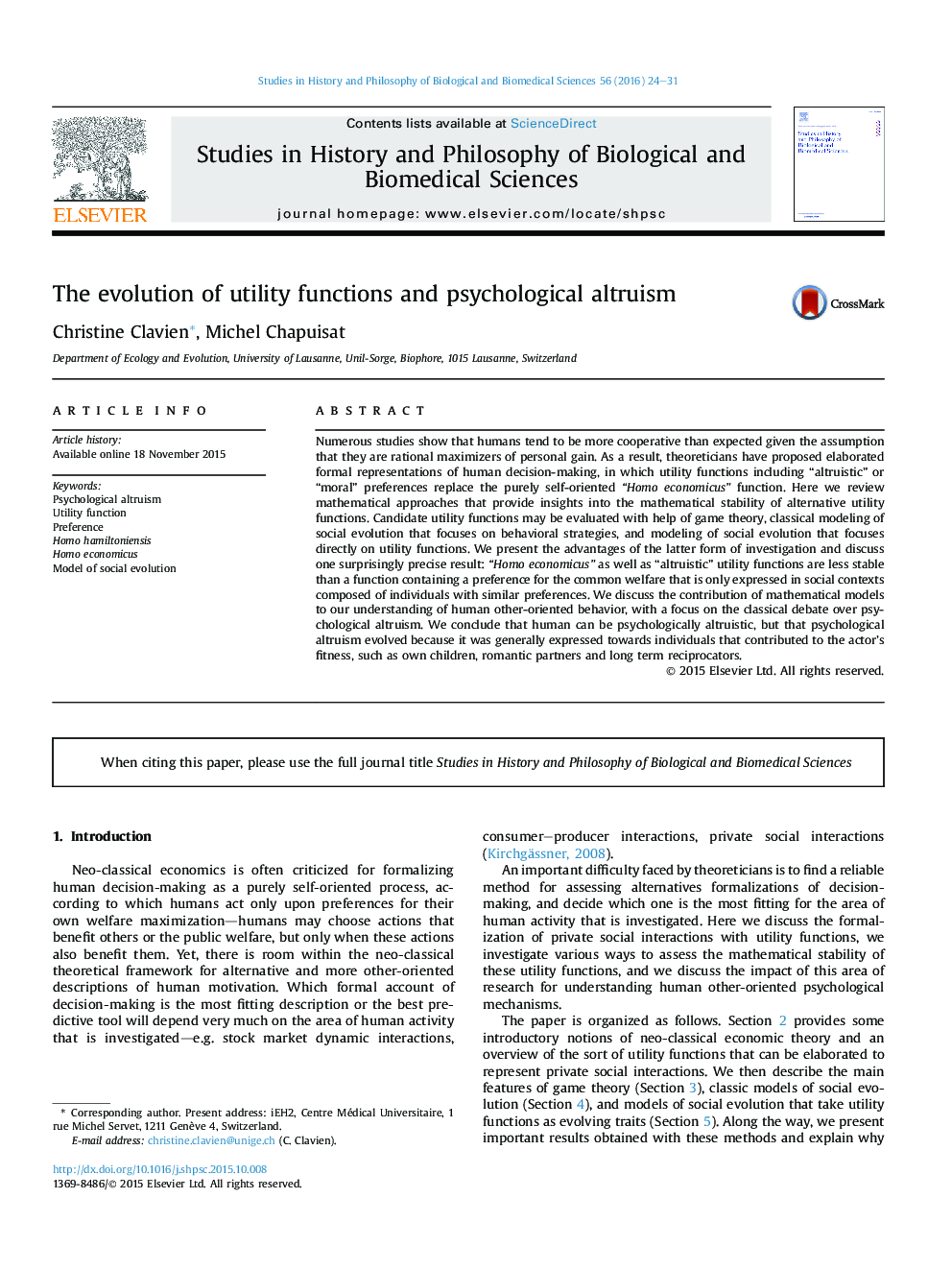| Article ID | Journal | Published Year | Pages | File Type |
|---|---|---|---|---|
| 1161598 | Studies in History and Philosophy of Science Part C: Studies in History and Philosophy of Biological and Biomedical Sciences | 2016 | 8 Pages |
•We review and assess mathematical ways of representing human social decision-making.•We highlight the relevance of one utility function called “Homo hamiltoniensis”.•We discuss how utility functions may operate in the real world.•We argue that psychological altruism evolved because it contributed to the actor's own fitness.
Numerous studies show that humans tend to be more cooperative than expected given the assumption that they are rational maximizers of personal gain. As a result, theoreticians have proposed elaborated formal representations of human decision-making, in which utility functions including “altruistic” or “moral” preferences replace the purely self-oriented “Homo economicus” function. Here we review mathematical approaches that provide insights into the mathematical stability of alternative utility functions. Candidate utility functions may be evaluated with help of game theory, classical modeling of social evolution that focuses on behavioral strategies, and modeling of social evolution that focuses directly on utility functions. We present the advantages of the latter form of investigation and discuss one surprisingly precise result: “Homo economicus” as well as “altruistic” utility functions are less stable than a function containing a preference for the common welfare that is only expressed in social contexts composed of individuals with similar preferences. We discuss the contribution of mathematical models to our understanding of human other-oriented behavior, with a focus on the classical debate over psychological altruism. We conclude that human can be psychologically altruistic, but that psychological altruism evolved because it was generally expressed towards individuals that contributed to the actor's fitness, such as own children, romantic partners and long term reciprocators.
